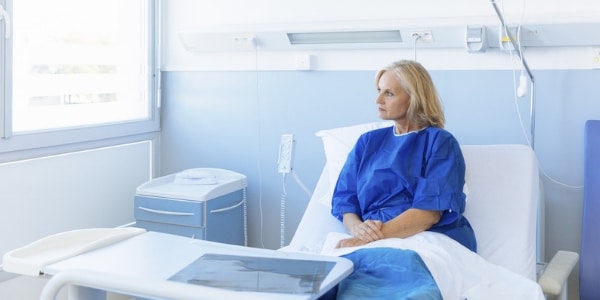One of the leading causes of death in hospital ICUs is sepsis. Elderly patients are vulnerable to this blood infection, which is life-threatening.
How Does One Get It?
The potentially life-threatening situation is a reaction to the body’s response to an infection. Usually, the body lets chemicals out of the body and into the bloodstream to fight infections. The illness happens when the body’s reaction to the chemicals is not in balance, which triggers changes that can result in damaging different organ systems.
Ways to Prevent the Illness
As we grow older, we are more susceptible to coming in contact with sepsis. There are some steps we can take in order to reduce our risk of this happening. It is important that seniors understand that people over the age of 65 account for 12 percent of the American population, while they account for 65 percent of sepsis cases in hospitals.
- Getting vaccinated is important. The Centers for Disease Control report that 35 percent of septic cases resulted from pneumonia.
- It is urgent to treat urinary tract infections as soon as possible, 25 percent of sepsis cases were a result of urinary tract infections.
- Always take the time to clean skin wounds and care for them properly.
- Avoid infections in hospitals.
- One simple way to reduce the risk of sepsis is proper hand-washing. You should be thorough in your hand washing by using soap and water. This decreases the total number of pathogens entering your body.
- Address any infection and consider it serious. Don’t just hope it will go away. You need to be pro-active.
What Can Happen If It Progresses?
It can progress to septic shock. If this happens, blood pressure takes a drastic drop. This can result in death. Although this can happen to anyone, it is most dangerous in the following groups of people:
- Pregnant women
- Older adults
- Children under one year of age
- Those suffering from chronic conditions including diabetes and cancer
- People suffering from a weakened immune system
Early intervention is imperative. Usually, antibiotics are given along with intravenous fluids in large amounts. This will help improve the chances of survival.
 What to Look For
What to Look For
The medical staff must first confirm the patient has an infection. Once this has been confirmed, both of the following symptoms must present:
- There is a noticeable change in the mental status
- The respiratory rate is equal to or higher than 22 breaths per minute
Be Aware of Some Situations
The illness most often occurs when a person is hospitalized. It also strikes people who were recently in the hospital. Patients in an intensive care ward are even more susceptible to developing an infection, which can then change to sepsis. Following surgery, if you develop these symptoms, you should immediately seek medical help.
Different Causes
Any infection, be it bacterial, fungal, or viral, can develop into the illness. The more likely varieties are the following:
- Infection in the digestive system. This includes organs such as the colon and stomach
- Areas of the urinary system such as an infection of the bladder or kidney
- Bacteremia, a bloodstream infection
- Pneumonia
Risk Factors Involved
Sepsis and septic shock, are more common in a person if any of the following is true:
- You are young or old
- Your immune system is compromised
- You suffer from cirrhosis or diabetes
- You are very ill and are in a hospital ICU
- You have injuries, like burns
- You have an invasive device like intravenous catheters
- You have been given antibiotics or corticosteroids previously
Complications Resulting From the Illness
If you develop sepsis, you will discover it comes in degrees, from less to very severe. When it gets worse, the blood flow to your major organs, like your kidneys, heart, and brain, becomes impaired. It can also cause blood clots in the organs as well as in your arms, fingers, toes and legs. This can lead to a different degree of failure of your organ as well as tissue death (gangrene).
If you have a mild case of sepsis, you can usually recover; however, septic shock mortality is around 40 percent. If you have an issue of severe sepsis, this can also put you at a higher risk of developing future infections.





